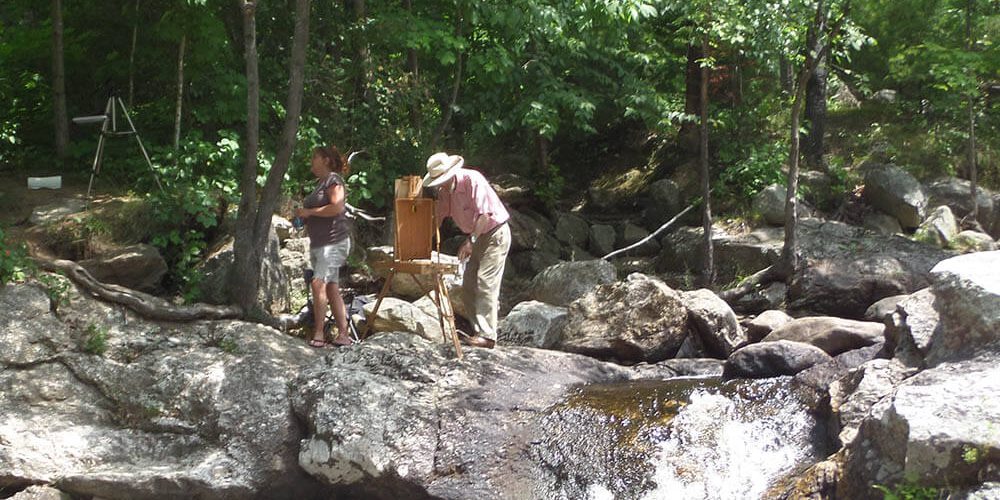A painter experiences summer like a surfer on a wave – propelled forward by sheer nature, and allowing her force to uplift and inspire in ways that moves an artist forward.
The annual transition from winter to summer is sometimes swift, leaving us wondering what happened to spring, but more often is accompanied by a several week morph of lengthening daylight and warming temperatures. The difference between winter’s low and summer’s high can be 100 degrees or more in many locations. Summer brings with it renewed growth, vibrant days, and new outdoor experiences.
As a painter, I find this time of year inspiring. Perhaps it’s the burst of lush plant growth, or the change in light. There is symbolism in all seasons, with summer having a peak mature feel, as we round out nature’s cycle.
A quick study of landscape pictures painted over time reveals the majorities are from warmer months. This may mean most painters find summer inspiring and uplifting. Additionally, summer affords an easy opportunity for painters to study nature directly. Stop, think, study. If you are a painter who strives to select from nature her aesthetic qualities to incorporate in your work, the benefits from this kind of study can be very helpful.
Analysis of nature can be done almost anywhere, and anytime – and is a life long pursuit with a never ending pool of things to learn. One recent evening watching the sky during sunset, a faint sliver of a crescent moon appeared, and shortly after a lone star. Other stars, I surmised, were too dim to show themselves yet in the still pale blue lit sky. Elsewhere, areas of orange-red tinted see-though wisps of clouds cast a thin veil. Thinking the scene through, I thought of the moon and star. Just one star can be seen at first – surely more will show themselves as the sky darkens. One moon, one star, one sun still lighting the sky and land, nature’s lushness all around. And a lesson in value contrasts. I noticed as the evenings’ twilight advanced, the moon appeared brighter, but I realized, it was the value contrast – the sky around the moon was darkening and therefore it only appeared brighter. How many other lessons can be gleaned? The tree over there is about half perforated as the sky leaks through it’s inner branch structure. The trunk is part in shadow, and part lit. I can see the grass in the shadow at the edge of the field, but I can’t see into the shadow in the darkest areas of the tree line. What color is the tree line shadow? Not black… not as dark as can be… On another day, the grass was almost yellow in the sunlight, bright, but still not as bright as the sky – which itself was punctuated by a cloud that is both lighter and darker than the sky – depending on what part of the cloud you look at…. The glint on the water over there was shining like jewels. Now to paint it……

